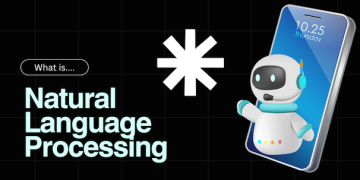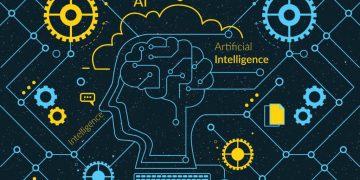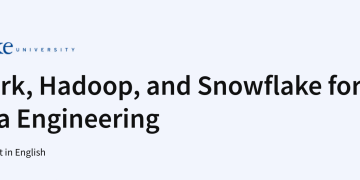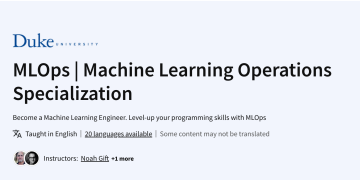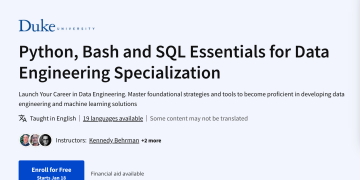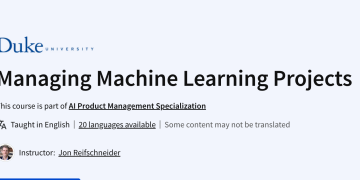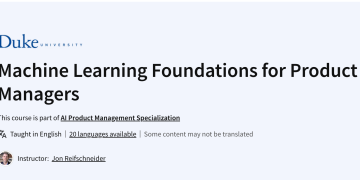Data science is a vital part of every industry today, given the vast amount of data that is being generated. Data science is one of the most discussed issues in the industry these days. Its popularity has increased over the years, and businesses have begun to adopt data science techniques to broaden their business and improve customer loyalty. In this post, we’re going to learn what data science is and how you can become a data scientist.
Table of Contents
- What is Data Science?
- Why Data Science?
- Prerequisites for Data Science
- Data Science Skills
- Who is a Data Scientist?
- Must-know Machine Learning algorithms
- Difference between Business Intelligence and Data Science
- Data Science Lifecycle
- Applications of Data Science
- Skills to Become a Data Scientist
- Data Science as a Career
What is Data Science?
Data science is a field of research that deals with large quantities of data using modern tools and techniques to identify unknown patterns, gain insightful knowledge and make business decisions. Data science uses advanced machine learning algorithms to build predictive models.
The data used for analysis may be from various sources and may be available in a variety of formats.
Now that you know what data science is all about, let’s see why data science is important in the current scenario.
Why Data Science?
Data science or data-driven science allows improved decision-making, predictive analysis and trend discovery. It only lets you:
- Find the root cause of the issue by answering the right questions.
- Perform a data exploratory analysis
- Model data using different algorithms
- Communicate and visualize the outcomes using graphs, dashboards, etc.
In reality, data science is now helping the airline industry anticipate travel delays to relieve the burden for both airlines and travelers. With the aid of data science, airlines can optimize their operations in many ways, including:
- Plan routes and determine whether to schedule direct or connecting flights;
- Develop predictive analytics models to predict flight delays
- Give tailored promotional deals based on customer booking trends
- Decide which type of aircraft to purchase for better overall performance.
Data Science Prerequisites
Here are some of the technical terms you need to know about before you start exploring what data science is all about.
- Machine Learning
Machine learning is the core of the science of data. In addition to basic knowledge of statistics, data scientists need to have a solid understanding of ML. - Mathematics
Mathematical models allow you to make fast calculations and predictions based on what you already know about the data. Modelling is also part of ML and requires identifying which algorithm is best suited to solve a given problem and how to train these models. - Statistics
Statistics are at the centre of data science. Good statistical handling will help you extract more intelligence and produce more realistic outcomes. - Programming
A certain level of programming is necessary to carry out an effective data science project. Python and R are the most popular programming languages. Python is extremely common because it’s easy to learn and supports several data science and ML libraries. - Databases
A capable data scientist, you need to understand how databases work, how to manage them, and how to extract data from them.
Data Science Skills
Let talk about skills and tools used by people in different fields of data science.
| Field | Skills | Tools |
|---|---|---|
| Data Analysis | R, Python, Statistics | SAS, Jupyter, R Studio, MATLAB, Excel, RapidMiner |
| Data Warehousing | ETL, SQL, Hadoop, Apache Spark, | Informatica/ Talend, AWS Redshift |
| Data Visualization | R, Python libraries | Jupyter, Tableau, Cognos, RAW |
| Machine Learning | Python, Algebra, ML Algorithms, Statistics | Spark MLib, Mahout, Azure ML studio |
Let us understand what does a data scientist does in the next section of the What is Data Science article.
What Does a Data Scientist Do?
A data scientist analyzes market data to gather useful insights. In other words, a data scientist solves business problems through a variety of steps, including:
- Ask the correct questions to understand the issue.
- Collect data from various sources—business data, public data, etc.
- Process raw data and convert it into a format appropriate for review.
- Feed data to the analytical system—ML algorithm or mathematical model.
- Prepare findings and perspectives to be shared with relevant stakeholders
So now you should be aware of some of the machine learning algorithms that specifically enable us to understand data science.
Must-Know Machine Learning Algorithms
The most basic and important ML algorithms used by the data scientist include:
1. Regression
Regression is an ML algorithm based on supervised learning techniques. The output of regression is a real or continuous value. For example, predicting the temperature of a room.
2. Clustering
Clustering is an ML algorithm based on unsupervised learning techniques. It works on a set of unlabeled data points and groups each data point into a cluster.
3. Decision Tree
A Decision Tree refers to a supervised learning method used primarily for classification. The algorithm classifies the various inputs according to a specific parameter. The most significant advantage of a decision tree is that it is easy to understand, and it clearly shows the reason for its classification.
4. Support Vector Machines
Support Vector Machines (SVMs) is also a supervised learning method used primarily for classification. SVMs can perform both linear and non-linear classifications.
5. Naive Bayes
Naive Bayes is a statistical probability-based classification method best used for binary and multi-class classification problems.
People who are willing to know what is data science should also be aware of how data science differs from business intelligence.
Difference Between Business Intelligence and Data Science
Business Intelligence is a combination of the strategies and technologies used for the analysis of business data/information. Like data science, it can provide historical, current, and predictive views of business operations. However, there are some key differences.
| Business Intelligence | Data Science |
|---|---|
| Uses structured data | Uses both structured and unstructured data |
| Analytical in nature – provides a historical report of the data | Scientific in nature – perform an in-depth statistical analysis on the data |
| Use of basic statistics with emphasis on visualization (dashboards, reports) | Leverages more sophisticated statistical and predictive analysis and machine learning (ML) |
| Compares historical data to current data to identify trends | Combines historical and current data to predict future performance and outcomes |
Data Science Project Lifecycle
Study of Concept
The concept study is the first phase of the data science project. The purpose of this phase is to understand the issue by conducting a study of the business model.
Let’s assume that you’re trying to predict the price of a barrel of crude oil. To do this you need to understand the language used in the industry and the business issue then gathers sufficiently relevant details about the industry.
Data Preparation
Since raw data may not be available, data preparation is the most critical part of the data science lifecycle. The data scientist must first review the data to find any holes or data that do not add value. You have to go through several steps during this process, including:
- Integration: Data Integration resolve any conflicts in the dataset and eliminate redundancies
- Transformation: Data Transformation Normalize, transform and aggregate data using ETL (extract, transform, load) methods
- Reduction: Data Reduction using different methods, minimize the size of the data without affecting the quality or result.
- Cleaning: Data Cleaning correct inconsistent data by filling out missing values and smoothing out noisy data
Model Planning
After you’ve cleaned up your results, you need to choose an acceptable model. The model you want must fit the nature of the problem—is it a regression problem or a classification problem? This move includes an Exploratory Data Analysis (EDA) to provide a more in-depth analysis of the data and to clarify the relationship between the variables. Some of the tools used for EDA are histograms, box plots, trend analysis, etc.
Using these methods, we can easily find that the relationship between a carat and the price of a diamond is linear.
Then divide the details into training and testing data—training the data to train the model, and testing the data to validate the model. If the test is not successful, you will need to retrain the processor model using another model. If it’s true, you can bring it into development.
The different methods used for model planning are as follows:
- R can be used both for regular statistical analysis or mission learning analysis, including visualization for more detailed analysis
- Python offers a rich library for performing data analysis and machine learning
- Matlab is a popular tool and one of the easiest to learn
- SAS is a powerful proprietary tool that has all the components required to perform a complete statistical analysis
Model Building
The next step in the lifecycle is to build the model. Using various analytical tools and techniques, you can manipulate the data with the goal of ‘discovering’ useful information. You can quickly build models using Python packages from libraries like Pandas, Matplotlib, or NumPy.
After model building, the next phase to focus on in the What is Data Science article is communication.
Communication
The next step is to obtain the main results of the study and to communicate them to the stakeholders. A good scientist should be able to communicate his findings to a business-minded audience, providing specifics of the steps taken to solve the issue.
Operationalize
Once all the parties have approved the findings, they will be initiated. The final reports, the code and the technical documents are also accessible to stakeholders at this level.
Applications of Data Science
Data science has found its use in almost every industry.
Healthcare services
Healthcare companies are using data science to create advanced medical instruments to diagnose and cure diseases.
Gaming
Video and computer games are now being developed with the aid of data science, and this has brought the gaming experience to the next level.
Image Recognition
Identifying patterns in images and detecting objects in images is one of the most common applications in data science.
Recommendations Systems
Netflix and Amazon offer film and product suggestions based on what you want to watch, buy, or browse on their sites.
Logistics
Data Science is used by logistics companies to refine routes to ensure quicker delivery of goods and to improve operating efficiency.
Fraud Detection
Banking and financial institutions are using data science and related algorithms to identify fraudulent transactions.
Data Science as a Career
Over the past five years, work openings for data science and related positions have risen dramatically. Glassdoor named data scientist as the number one position in the United States in its 2019 survey. The U.S. Bureau of Labor Statistics estimates that an improvement in data science needs would generate 11,5 million jobs by 2026.
There are a variety of work positions you can look for in the field of data science.
Some of the essential tasks of the work are:
- Data Scientist
- Machine Learning Engineer
- Data Consultant
- Data Analysts
According to Glassdoor, the average salary of a data scientist in the United States is $113,000 per year.
If you want to develop your career in data science and become a data scientist, here’s a useful certification course that you can enrol in.
Data is the oil for companies in the coming decade
A
[rb_related title=”You May Also Like” total=”2″]
Summary
Through incorporating data science techniques into their business, businesses can now predict future growth and analyze whether there are any imminent threats. Now if you’re interested, it’s the right time for you to start your career in data science.
Do you have any questions about this ‘What is Data Science’ article? If so, please include it in the comments section of the post. Our team will help you solve your questions as soon as possible.



